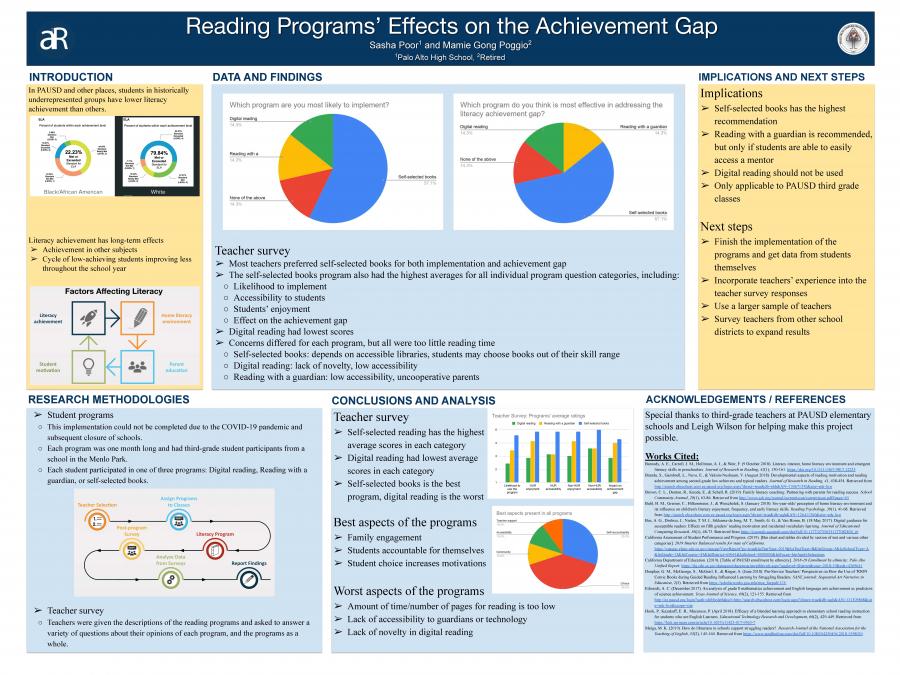Summary
This paper explores the causes, impacts, and attempted solutions of literacy development and the literacy achievement gap between students from historically underrepresented ethnic groups and students from other ethnic groups. It details the plan for a study that would research features in literacy programs and how they affect this achievement gap, as well as how effective these features are in addressing the literacy achievement gap. This research aimed to discover reading programs that can help decrease this achievement gap in the Palo Alto Unified School District. It found that the best feature of a reading program is the student being able to choose their own books, and reading with an older mentor is also a beneficial feature, while having students read a digital book on their own is not beneficial to decreasing this achievement gap.
Personal Statement
I have always loved reading, ever since I was young. However, many people do not enjoy reading, whether because they lack confidence or have not yet found books that they like. I wanted to make reading more accessible and enjoyable for everyone. I noticed that there is a significant literacy achievement gap between ethnic minorities and other in PAUSD, and my AAR project has helped me research this more. I have been able to learn about possible causes and design some of my own programs to help students read more and increase their achievement. Through AAR, I have been able to learn more about a subject that I enjoy and find a small way to make a difference.

